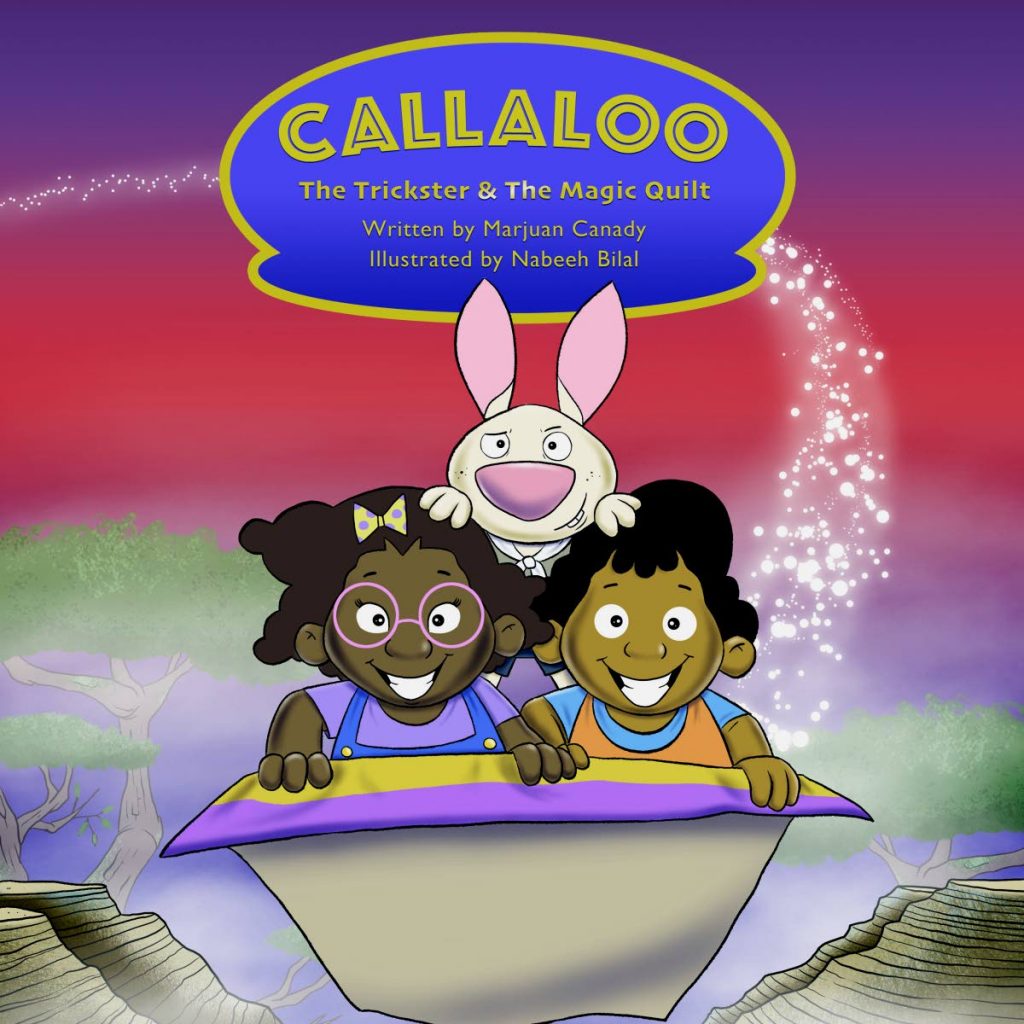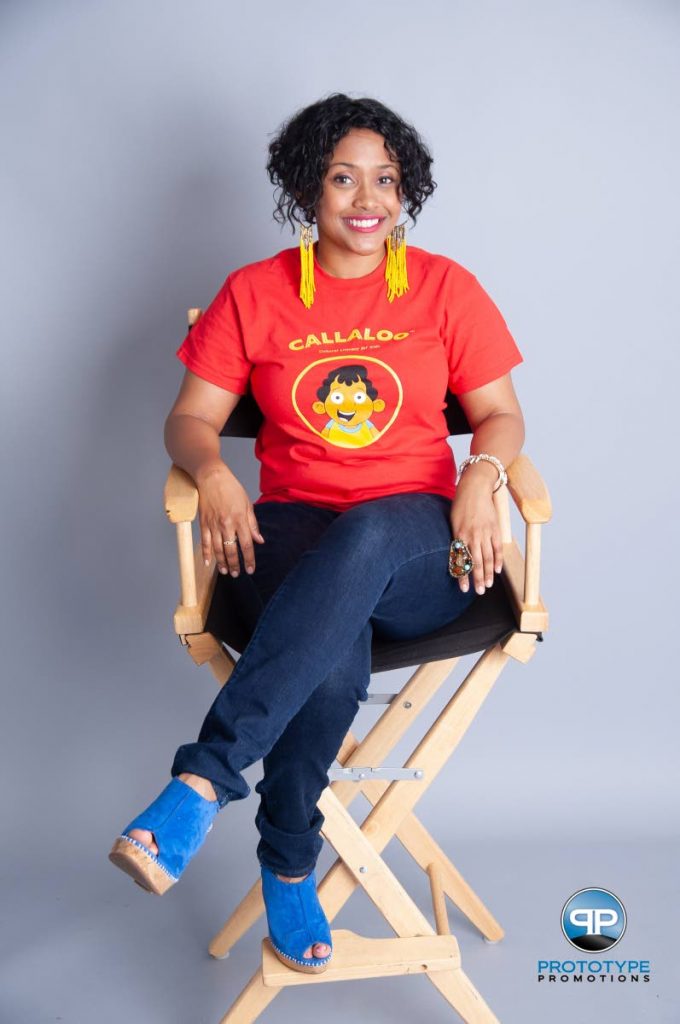TT-American’s Callaloo discovers Gullah culture

LISA ALLEN-AGOSTINI
“MY mission with the Callaloo brand is to celebrate the brilliant folklore and culture of the African Diaspora and create culturally conscious content for children of colour to see themselves in books, on stage and in film and TV,” said Marjuan Canady, a Trinidadian-American author and entrepreneur.
Her first Callaloo book, Callaloo: A Jazz Folktale, for readers aged three to seven, came out in 2013. Callaloo is a multi-media brand and has appeared at the White House Tree Lighting, on Sesame Street and on Kweli TV, among other prestigious platforms. In November the three-book series was featured at the Miami Book Fair.
The newest book, Callaloo: The Trickster and the Magic Quilt, was published in June and in September was performed as a puppetry and live theatre show on the Kennedy Center Millennium Stage. Written by Canady and illustrated and co-created by Nabeeh Bilal, the new book takes its Caribbean-American characters on a trip to the Sea Islands, South Carolina.
She answered a few questions on the new book via e-mail.

Marjuan Canady, author and co-creator of Callaloo. Photo courtesy Carl Gray/ Marjuan Canady.
Newsday: What's Callaloo the Trickster and the Magic Quilt about?
Marjuan Canady: This story pays homage to African-American Southern folklore. In search of a long-lost patch from her grandmother’s quilt, Zoe and her friend Winston travel to the Gullah Sea Islands where they meet the slick-talking Bruh Rabbit, who tricks them into handing over their quilt and vanishes to the magical island of Sankofaland. With time running out, Zoe and Winston enlist the help of some new friends to catch the trickster and find the missing patch before it’s too late.
This book was important to me as I wanted to highlight the significance of the Gullahs to African Diaspora and American culture and how the Caribbean played a significant role in the identity of the Gullah Geechee culture.
Both Nabeeh Bilal and I travelled to the Gullahs, South Carolina, to research. We wanted to understand the folklore, food culture and heritage. We were also honoured to have Paula Whaley, visual artist and James Baldwin's sister, contribute a foreword for this book.
Where did Callaloo come from? How did your TT heritage inspire it?
Originally Callaloo was inspired by my heritage as a first-generation Trinidadian-American who was born and raised in Washington, DC. In 2012, I began creating this adventurous Caribbean-American tale as a theatrical play inspired by my own childhood experiences, full of Trinbagonian folklore as the backdrop. I wanted to explore how Caribbean-American kids understood their heritage, everything from food, language, storytelling, oral traditions and as well as how we are creating our own unique Caribbean-American experience through our lived cultural practices and memories.
By 2014, my business partners, Nabeeh Bilal and Tatiana Johnson (business operations/ co-creator), joined forces with me to build Callaloo into an award-winning children's media band comprised of books, live shows, puppetry, animation, digital content, and arts education curriculum. To date, we have served over 4,000 children internationally, spreading cultural literacy worldwide.
In six years, our self-published books have not only explored Trinidadian folklore but other regions in the African Diaspora, including Puerto Rico in our second book, Callaloo: The Legend of the Golden Coqui, and now the African-American Gullah region of South Carolina in our most recent release Callaloo: The Trickster and the Magic Quilt.
Caribbean children's writing is a very small but growing niche. What has been the response to your books in the region and in the US?
We have had a great response to our books and products in the last six years. After being rejected from numerous publishers and agents in the first year of our development, we decided to go the independent route and I'm sure glad we did because we have created our lane in the children's publishing and media industries. As independent creators, we have had the opportunity to work closely with companies that buy our products as well as speak directly to our consumers (parents, kids, educators) on how our books are positively enhancing children's lives.
In the US we have been able to partner with many organisations and schools who truly value our mission and style of storytelling in publishing, theatre and in the digital space. There are not many platforms for writers and illustrators of colour to tell their stories authentically, so we take pride that we have been able to tell our stories, grow an incredible audience from the ground up and most importantly truly impact black and brown children globally.
The Caribbean communities have also been welcoming to the Callaloo brand, as in 2014 we brought our arts education programming to both TT schools and the National Library. In 2016, the non-profit Hands Across the Sea bought over 50 copies of our books and distributed them to schools in the Eastern Caribbean. I believe we are just scratching the surface on what Callaloo can do on an international level.
Any plans to bring the new book here?
We hope to bring Callaloo to the Bocas Lit Festival in 2019 as well as other Caribbean and African Diaspora literary and children's focused festivals.
What is next for you and Callaloo?
In 2019, I'll be releasing new work including a podcast, two documentary films and a Web series, as well as premiering a new theatrical play at the Anacostia Arts Center in Washington, DC. I will also be presenting at the African Diaspora Gullah Geechee Conference in March 2019 on my research on Caribbean/ African Diaspora folklore. The next step for Callaloo is to move into the TV, film and digital spaces with a fully animated or live action series. We are also continuing to enhance our live performances with the goal of producing an international tour.
More info: www.callalookids.com, social media @callalookidsofficial and on YouTube @CallalooTV


Comments
"TT-American’s Callaloo discovers Gullah culture"